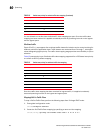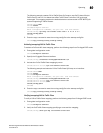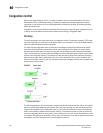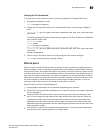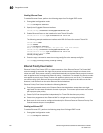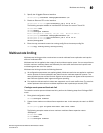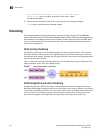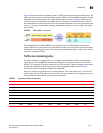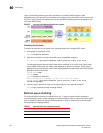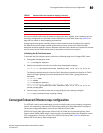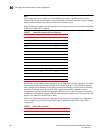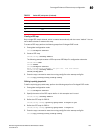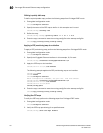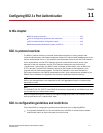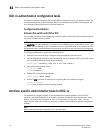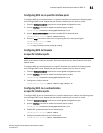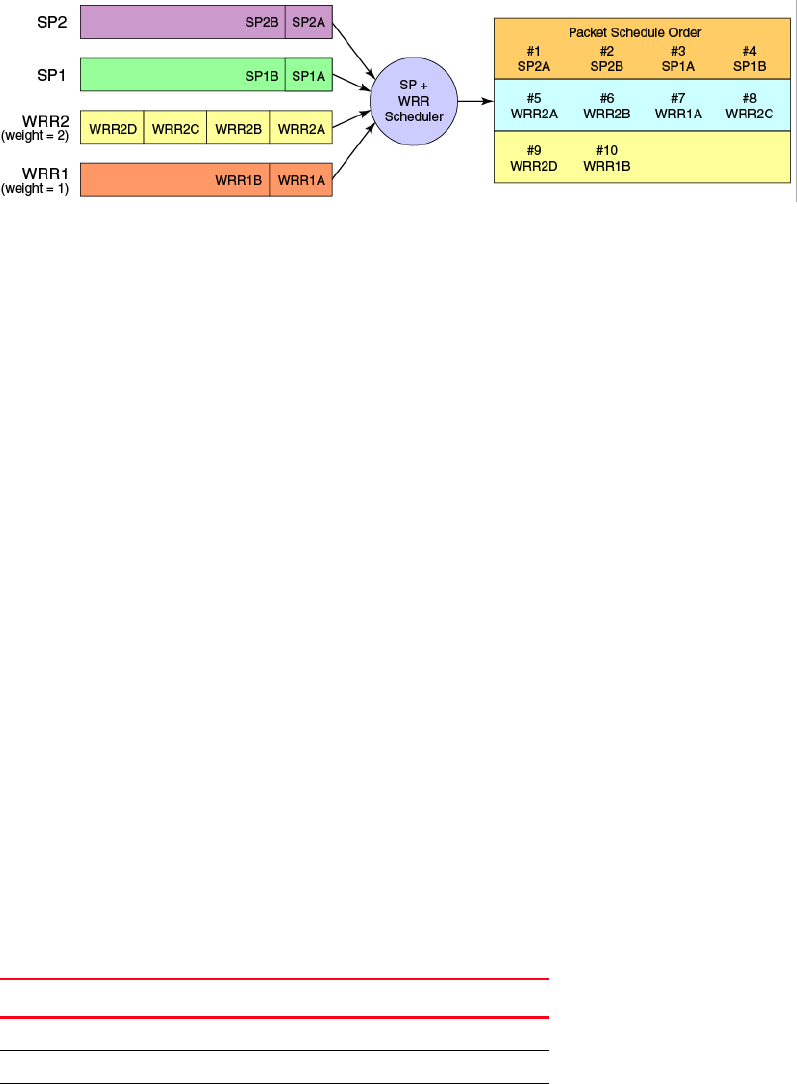
106 Dell Converged Enhanced Ethernet Administrator’s Guide
53-1002116-01
Scheduling
10
Figure 9 shows that extending the frame scheduler to a hybrid SP+WRR system is fairly
straightforward. All SP queues are considered strictly higher priority than WRR so they are serviced
first. Once all SP queues are drained, then the normal WRR scheduling behavior is applied to the
non-empty WRR queues.
FIGURE 9 Strict priority and Weighted Round Robin scheduler
Scheduling the QoS queue
To specify the schedule to use, perform the following steps from Privileged EXEC mode.
1. Enter global configuration mode.
switch#configure terminal
2. Specify the schedule to use and the traffic class to bandwidth mapping.
switch(config)#qos queue scheduler strict-priority 4 dwrr 10 20 30 40
The following example sets the traffic class frame scheduler for 4 Strict Priority Traffic Class
and 4 DWRR Traffic Class with Traffic Class 0 getting 10 percent bandwidth, Traffic Class 1
getting 20 percent bandwidth, Traffic Class 2 getting 30 percent bandwidth, and Traffic Class 3
getting 40 percent bandwidth.
switch:admin>cmsh
switch>enable
switch#configure terminal
Enter configuration commands, one per line. End with CNTL/Z.
switch(config)#qos queue scheduler strict-priority 4 dwrr 10 20 30 40
switch(config)#end
3. Enter the copy command to save the running-config file to the startup-config file.
switch#copy running-config startup-config
Multicast queue scheduling
The multicast traffic classes are numbered from 0 to 7; higher numbered traffic classes are
considered higher priority. A fixed mapping from multicast traffic class to equivalent unicast traffic
class is applied to select the queue scheduling behavior. Table 21 presents the multicast traffic
class equivalence mapping applied.
TABLE 21 Multicast traffic class equivalence mapping
Multicast traffic class Equivalent unicast traffic class
00
11
22



